Your Guide to Visiting the Louvre
Visiting the Louvre for the first time can seem daunting. It’s the largest art museum on the planet, and contains everything from prehistoric statues and Egyptian sarcophagi to the world’s most famous painting – the Mona Lisa. From all the top highlights to hidden gems, this Louvre guide will give you a full idea of what to see and do at this amazing museum, as well as all the practical information you need.

What to see at the Louvre: the highlights
There are some truly unmissable things to see when visiting the Louvre. Certain works of art have become iconic for a reason. Have you ever been to a place only to miss the most crucial sights? Don’t let it happen again, and make sure you don’t accidentally miss out on some of the Louvre’s biggest highlights.
The Mona Lisa – Leonardo da Vinci
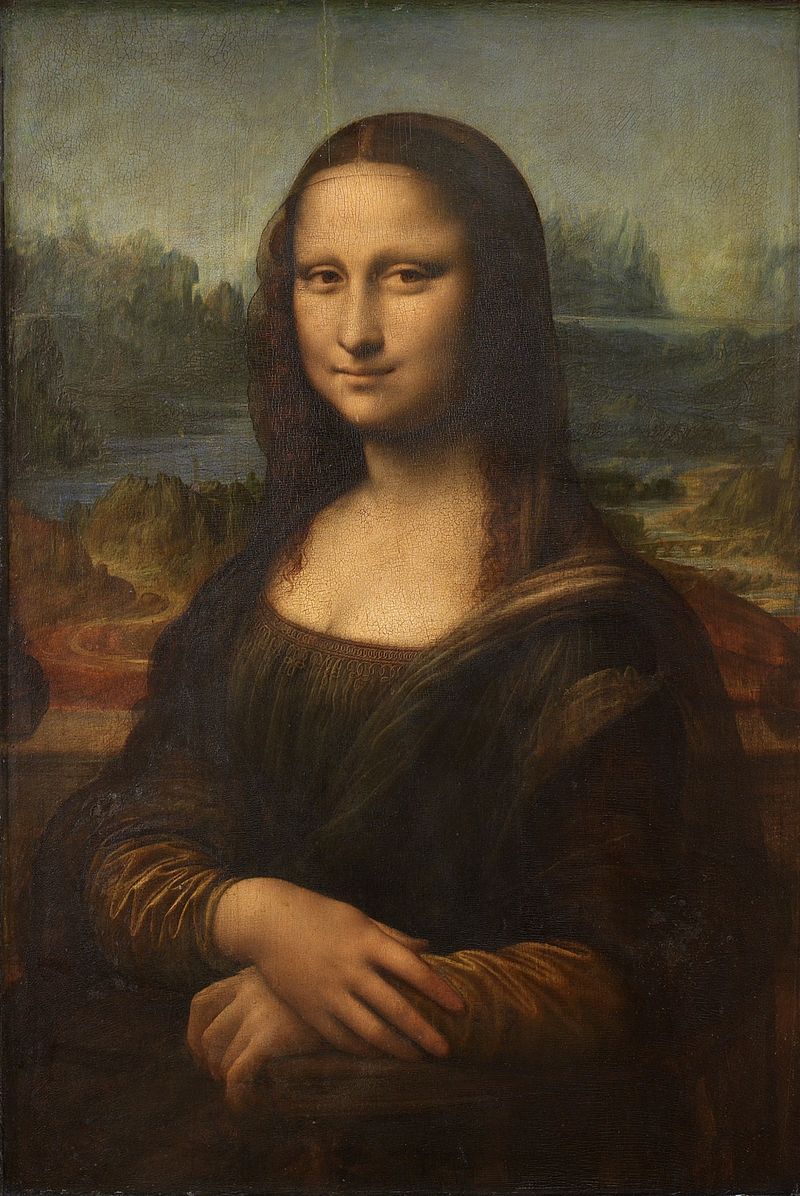
It’s estimated that 80% of people come to the Louvre to see the Mona Lisa alone. Approximately 30,000 visitors a day arrive to view this masterpiece, which can lead to some pretty big lines. As you approach the room in which it’s displayed (known as ‘the Mona Lisa room’), you’ll start noticing the crowds increase.
We’ll warn you in advance: it’s going to be busy, the painting is going to be smaller than you expect, and you won’t be able to spend an hour closely examining it. With that being said, it’s easily the most famous painting in the world, and do you really want to spend your life not seeing it?

Venus de Milo – Alexandros of Antioch
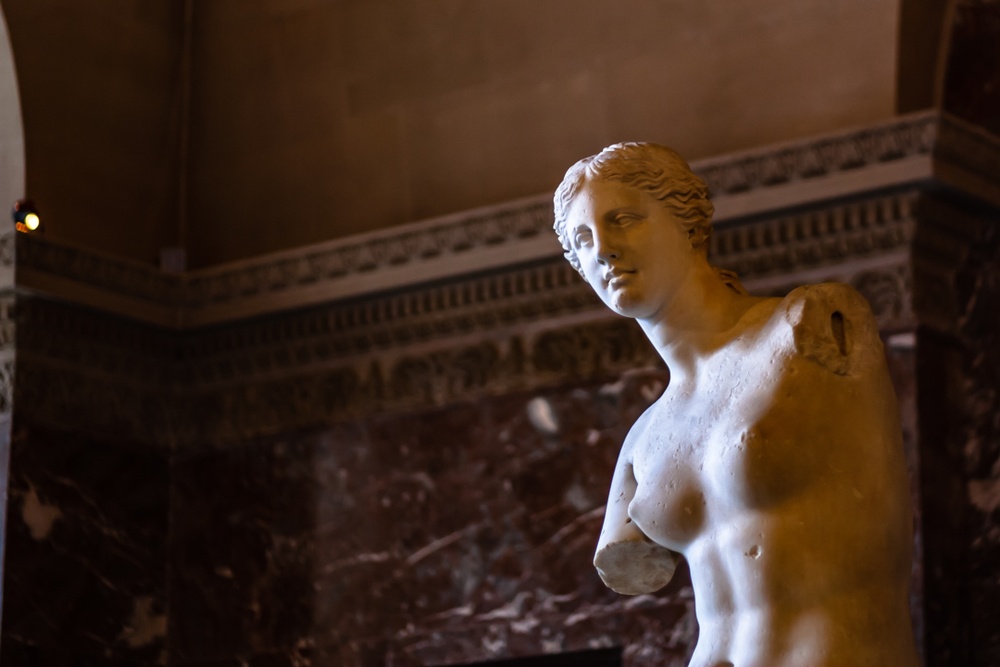
This Ancient Greek statue is generally believed to depict Aphrodite, the Greek goddess of love and beauty – who the Romans later conveniently decided was theirs, and renamed Venus. It was discovered in the ruined ancient city of Milos (hence the name) in 1820, after originally being sculpted between 130 and 100 BC.
Some scholars have a hot take, however: it’s not actually Aphrodite, but Amphitrite, a nautical goddess who was worshipped with particular devotion in Milos. In terms of iconic ancient statues, you can’t get much more famous than this one. It even inspired an episode of The Simpsons, over 2,000 years after it was originally created. Now that’s some serious cultural longevity.
Some scholars have a hot take, however: it’s not actually Aphrodite, but Amphitrite, a nautical goddess who was worshipped with particular devotion in Milos. In terms of iconic ancient statues, you can’t get much more famous than this one. It even inspired an episode of The Simpsons, over 2,000 years after it was originally created. Now that’s some serious cultural longevity.

Liberty Leading the People – Eugène Delacroix

There’s a reason we tend to think of ‘Lady Liberty’, and it’s not New York’s iconic green statue. This painting by Delacroix shows liberty personified as Marianne – basically the human form of the Republic of France itself.
It’s one of the earliest depictions of this now-ubiquitous concept, and was a direct inspiration for Frédéric Auguste Bartholdi’s famous Statue of Liberty. There’s no greater artistic representation of the French Revolution, which is also why it had such a controversial start to life.
Despite being a crowning achievement of the greatest Romantic painter of the time, it ended up spending years hidden in an attic by the government for fear of inspiring riots and – who could have predicted it – revolution. Fun fact: originally it was going to be displayed in the French throne room, as a friendly reminder to the king of what might happen if he fails to remember some core ideas like ‘liberté, égalité, fraternité’.
It’s one of the earliest depictions of this now-ubiquitous concept, and was a direct inspiration for Frédéric Auguste Bartholdi’s famous Statue of Liberty. There’s no greater artistic representation of the French Revolution, which is also why it had such a controversial start to life.
Despite being a crowning achievement of the greatest Romantic painter of the time, it ended up spending years hidden in an attic by the government for fear of inspiring riots and – who could have predicted it – revolution. Fun fact: originally it was going to be displayed in the French throne room, as a friendly reminder to the king of what might happen if he fails to remember some core ideas like ‘liberté, égalité, fraternité’.

The Raft of the Medusa – Théodore Géricault

Displayed in close proximity to Liberty Leading the People, this iconic painting is often seen as the pinnacle of French Romanticism. Based on a true event (a shipwreck which caused the death of over 100 sailors), Théodore Géricault’s painting shows the depths of despair that the survivors – desperately clinging to a life raft – resorted to.
The Raft of the Medusa shows the effects of starvation, dehydration, and cannibalism in gruesomely realistic detail. Even more gruesome when you consider the extent to which the artist researched his topic, as he visited hospitals and morgues to study the deathly pallor of the dying and deceased in order to represent it in his work. As you might have guessed, the painting received lavish praise as well as stern condemnation upon its reception, but has since become one of the legendary staples of French art.
The Raft of the Medusa shows the effects of starvation, dehydration, and cannibalism in gruesomely realistic detail. Even more gruesome when you consider the extent to which the artist researched his topic, as he visited hospitals and morgues to study the deathly pallor of the dying and deceased in order to represent it in his work. As you might have guessed, the painting received lavish praise as well as stern condemnation upon its reception, but has since become one of the legendary staples of French art.

Winged Victory of Samothrace
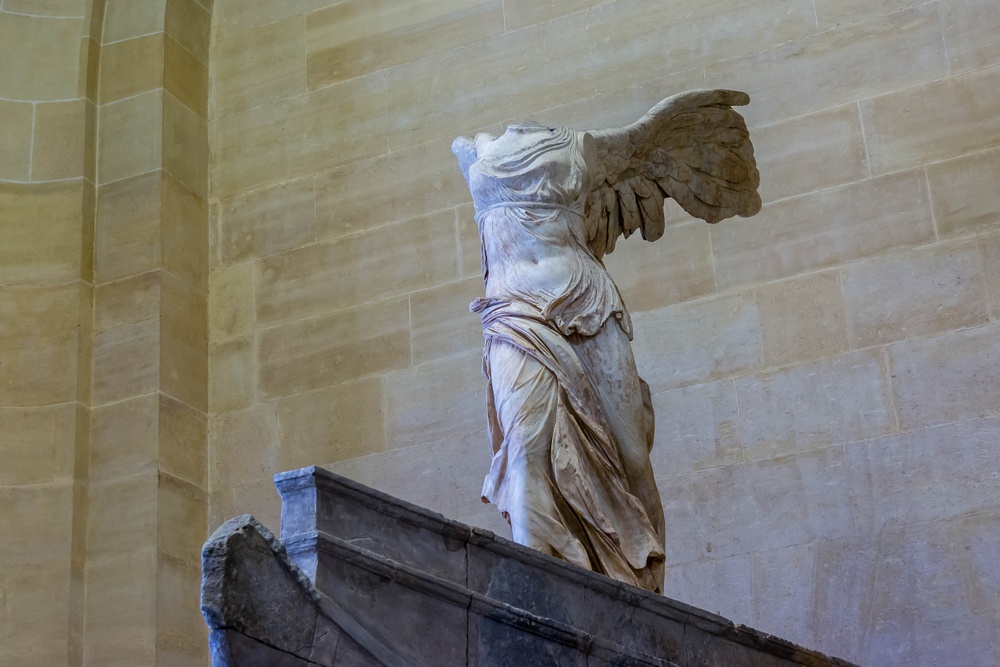
As you begin to ascend the staircase, you might start hearing murmured “wow”s and the sound of camera shutters doing overtime. Why’s that? No big deal, only one of the most spectacular ancient Greek statues ever created. Winged Victory takes pride of place in the Louvre for a reason, and can be admired (and photographed) from plenty of different angles.
It depicts Nike, the Greek goddess of victory, and was most likely created to celebrate a military success. Standing almost 2.5 meters high, just over 8 feet, you can almost see the trail of wind rushing in her wake. If you’re visiting the Louvre for the highlights, this one is unmissable.
It depicts Nike, the Greek goddess of victory, and was most likely created to celebrate a military success. Standing almost 2.5 meters high, just over 8 feet, you can almost see the trail of wind rushing in her wake. If you’re visiting the Louvre for the highlights, this one is unmissable.

Psyche Revived by Cupid’s Kiss – Antonio Canova

While undeniably one of the Louvre’s highlights, this intricate and complex statue by Canova could also go under ‘hidden gems’ depending on who you ask. It generally doesn’t draw the crowds that other masterpieces like the Mona Lisa or Venus de Milo do (if you’re lucky, you might even be the only one admiring it), but over the years this depiction of two mythological lovers has become emblematic of romance, passion, and devotion. The statue is intended to be viewed from several different perspectives, revealing something new every time – so make sure to walk around and take it in from multiple angles!

The Law Code of Hammurabi
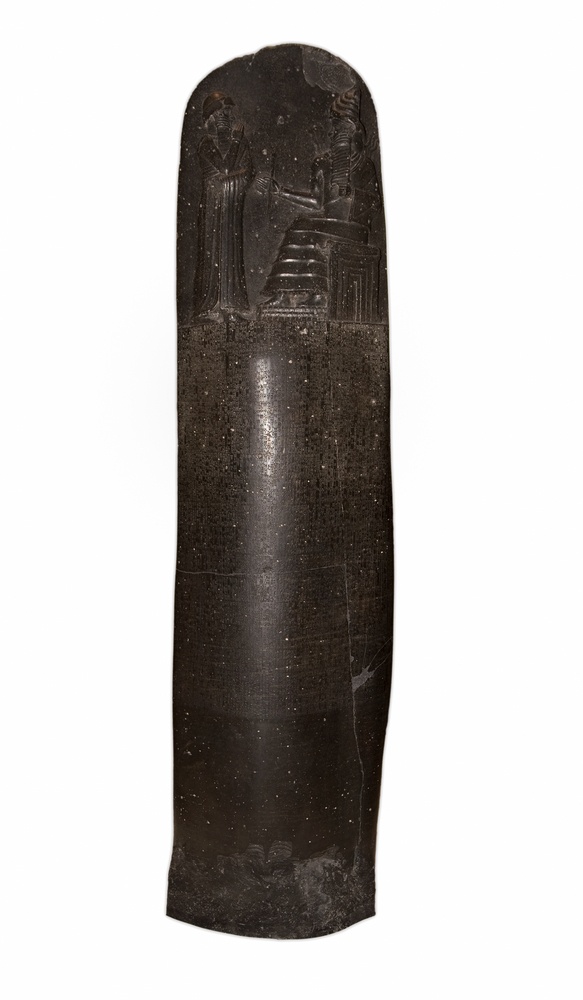
This imposing basalt stele, full of ancient symbols and laws, is unmissable for anyone with an interest in the past. King Hammurabi of Babylon is one of history’s most famous rulers, and this object represents what he claimed was his divine right to rule – having received the blessing of the sun god Shamash.
It’s one of the earliest examples of a legal text, and might well have been crucial in the formalizing of written laws. Look at it and imagine how it must have felt to live thousands of years ago, seeing this huge dark monolith telling the story of how your ruler spoke to the sun god himself. Pretty sweet!

The Louvre Pyramid – I.M. Pei
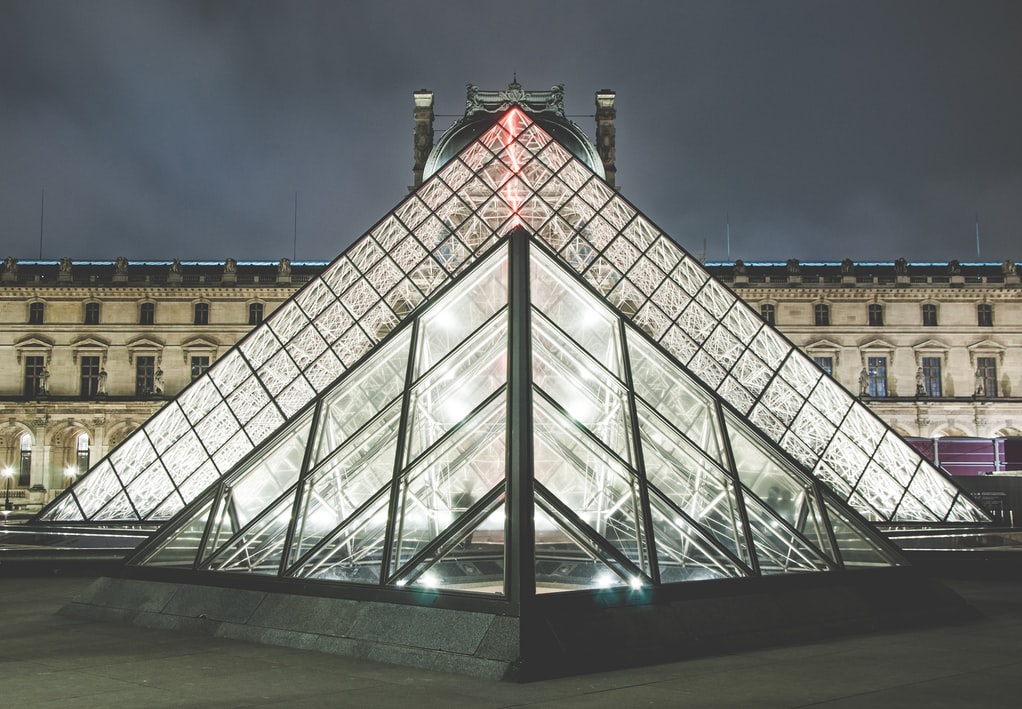
Architecture can be considered a form of art, especially when it’s as spectacular as the late I.M. Pei’s pyramid. Despite the Louvre being located in a Renaissance-style palace, most people will immediately think of the glass pyramid in the courtyard. It was completed in 1989, to the great dismay of some local Parisians – many saw it as too modern, incongruous, and bizarre. Since then, even the most fervent opposition has been won over (for the most part), and the Louvre’s pyramid is now as iconic as the Eiffel Tower. The best part? You literally can’t miss it – it’s the main entrance to the museum.
What to see at the Louvre: the hidden gems
Beauty is in the eye of the beholder, and while paintings like the Mona Lisa generally become famous for a reason, there are plenty of incredible things in the Louvre that don’t get nearly as much attention as they deserve. Here are some lesser-known treasures for you to discover during your Louvre visit.
The medieval Louvre | Pavillon de l’Horloge

Below the first floor, you’ll find the oldest part of the Louvre, dating back to medieval times. Transport yourself back to 1190, as King Philip II prepares to leave for the Third Crusade. Scarred by his defeat to Richard Lionheart, in which he lost his sacred archives, the king realized he needed to make sure the city was safe from the English in his absence – and was likely also motivated by an earlier Viking invasion that came all-too-close to successfully conquering the French capital. The solution? Build an insurmountable castle right next to the Seine. The Louvre Castle.
Despite the hyper-modernity of the pyramid and everyone snapping selfies with the sphinx, it’s easy to feel disoriented for a second as the centuries seem to roll back while walking around here. Seeing the ancient underground walls and remnants of the castle built to defend Paris between 1190 and 1215 is a humbling experience, and makes you realize just how long this place has been around.
Despite the hyper-modernity of the pyramid and everyone snapping selfies with the sphinx, it’s easy to feel disoriented for a second as the centuries seem to roll back while walking around here. Seeing the ancient underground walls and remnants of the castle built to defend Paris between 1190 and 1215 is a humbling experience, and makes you realize just how long this place has been around.

The Intervention of the Sabine Women – Jacques-Louis David

This 1799 painting by Jacques-Louis David isn’t one of the world’s most iconic works of art, but perhaps it should be. Imprisoned during an especially volatile period of French history full of terror, executions, and revolution, the painting was intended to encourage reconciliation and understanding, representing the triumph of love over hatred and warfare. It shows the Sabine women in the middle of the action, separating warring factions, while others scramble to rescue infants and children from the battle. As relevant today as it was back in the 18th century, it’s visually striking and open to plenty of new modern interpretations.

A Forest Floor with Snakes and Butterflies – Otto Marseus van Schrieck

Potentially the most obscure artwork in this guide, this hidden gem won’t be making many top 10 lists – but there’s a reason it’s being displayed at the Louvre. Created by Dutch painter Otto Marseus van Schrieck in 1670, the combination of snakes and butterflies hovering around the undergrowth in the woods immediately draws the eye of visitors who come across it.
The striking eyes and facial features of the serpents add an ominous undertone to this darkly coloured painting, and the contrast of beauty and darkness is enough to captivate anyone who gives it more than a passing glance.
The striking eyes and facial features of the serpents add an ominous undertone to this darkly coloured painting, and the contrast of beauty and darkness is enough to captivate anyone who gives it more than a passing glance.

Portrait of the Artist with a Mocking Face – Joseph Ducreux
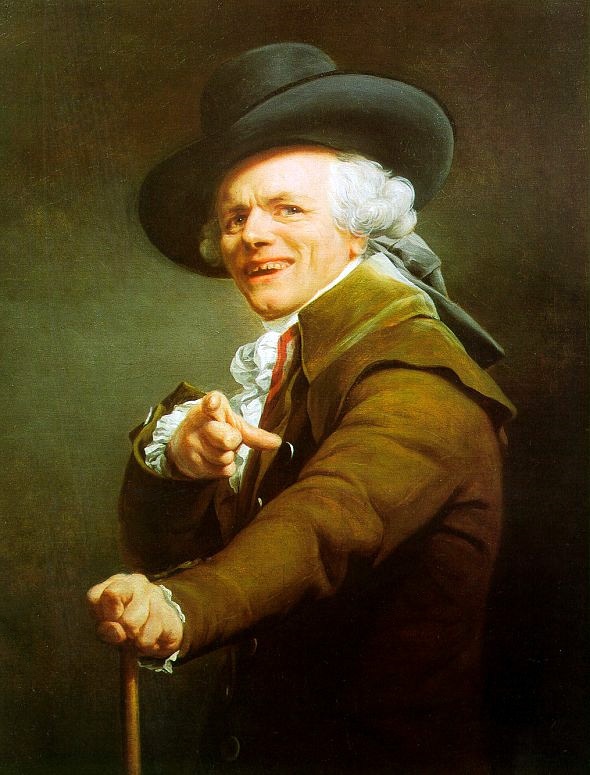
You might not recognize Joseph Ducreux’s name, but there’s a chance you’ll recognize his face. Having risen to some prominence on the internet multiple centuries after his death, Ducreux’s entertaining self-portrait has gained a new appeal in 21st-century meme format.
Seeing it on display, you’ll understand why. Is it the cheeky grin, the powerful choice of headwear, or the 18th-century pre-cursor to finger guns? It’s hard to say for sure, but there’s something about this painting that manages to entertain everyone who sees it.
Seeing it on display, you’ll understand why. Is it the cheeky grin, the powerful choice of headwear, or the 18th-century pre-cursor to finger guns? It’s hard to say for sure, but there’s something about this painting that manages to entertain everyone who sees it.

Portrait of Madame Pasteur, née Madeleine Alexandre – Antoine-Jean Gros
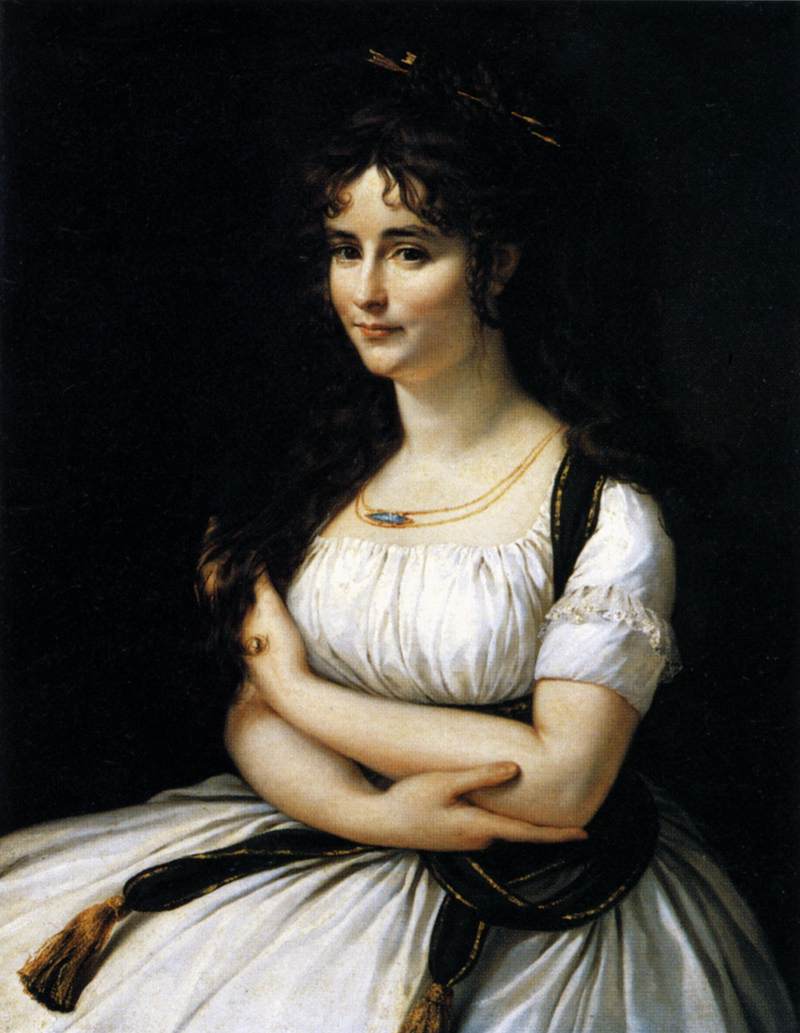
A mysterious female figure with unknown motivations behind what appears to be the hint of a smile. No, it’s not the Mona Lisa – it’s Madame Pasteur. This portrait was painted by the young Antoine-Jean Gros, who might well be the definition of a ‘tortured artist’.
After gaining renown based on his portraits of a young Napoleon (at this time still a mere general), Gros’s status quickly rose as he became one of France’s most admired painters. Unfortunately, his success didn’t last. Over time, his focus shifted away from Napoleon, and the public criticism of his work intensified to the point of driving him into deep depression. Gros drowned himself in the Seine aged 64.
After gaining renown based on his portraits of a young Napoleon (at this time still a mere general), Gros’s status quickly rose as he became one of France’s most admired painters. Unfortunately, his success didn’t last. Over time, his focus shifted away from Napoleon, and the public criticism of his work intensified to the point of driving him into deep depression. Gros drowned himself in the Seine aged 64.
There are several fascinating things about this painting, but the main one has to be the subject’s expression and body language. It’s neither open nor closed, mildly shy but still engaging, and the overall feeling is one of light-hearted innocence. Look at the way the woman (who commissioned the painting herself) is dressed – not in aristocratic splendour, but in a relatively simple gown. Portraits were often commissioned as a form of self-expression, so how is she trying to portray herself to the world?
One last thing: Alexandre Madeleine Pasteur was around 25 years old when this portrait of her was created. Gros was around 23. While there is no indication that their relationship was anything more than professional, look closely at the painting, and see if you can detect a glimmer of something more.
One last thing: Alexandre Madeleine Pasteur was around 25 years old when this portrait of her was created. Gros was around 23. While there is no indication that their relationship was anything more than professional, look closely at the painting, and see if you can detect a glimmer of something more.

Galerie d’Apollon

This spectacular gallery, which hosts the French crown jewels, is a work of art in itself. With golden decorations and paintings from wall to ceiling, it’s visually stunning and one of the Louvre’s most genuinely gasp-inducing areas. This hall was restored at the command of Louis XIV, the Sun King, and essentially served as a prototype for the famous Hall of Mirrors at the Palace of Versailles. If you can’t fit in a day trip to Versailles, visiting the Louvre and seeing this amazing gallery is the next best thing.
Henry James, the famous British-American author, visited the Galerie d’Apollon aged 13, and had the following to say: “… its supreme coved ceiling and inordinately shining parquet, a prodigious tube or tunnel through which I inhaled little by little, that is again and again, a general sense of glory. The glory meant ever so many things at once, not only beauty and art and supreme design, but history and fame and power, the world in fine raised to the richest and noblest expression.” Thanks Henry.
Henry James, the famous British-American author, visited the Galerie d’Apollon aged 13, and had the following to say: “… its supreme coved ceiling and inordinately shining parquet, a prodigious tube or tunnel through which I inhaled little by little, that is again and again, a general sense of glory. The glory meant ever so many things at once, not only beauty and art and supreme design, but history and fame and power, the world in fine raised to the richest and noblest expression.” Thanks Henry.

Boy Strangling a Goose

The last thing you might be expecting to see at the Louvre is a naked boy ferociously choking and punching a goose. That’s exactly what you’re going to see. You can basically hear the goose honking for vengeance, and the dynamism of the scene is undeniable. Just think about the fact that at some point around 2,000 years ago, a Roman sculptor devoted weeks of their life to crafting this spectacular depiction of a child fighting a bird. It’d be rude not to admire it.
It’s believed that this statue was based on an original Greek work, which was found in the ancient Asklepion (healing center) on the island of Kos. This has led some art historians to believe that the statue may be a metaphor for the struggle against disease and fevers – presumably represented here by the goose being ruthlessly pummeled. Either way, it’s one of the Louvre’s many unexpected delights.
It’s believed that this statue was based on an original Greek work, which was found in the ancient Asklepion (healing center) on the island of Kos. This has led some art historians to believe that the statue may be a metaphor for the struggle against disease and fevers – presumably represented here by the goose being ruthlessly pummeled. Either way, it’s one of the Louvre’s many unexpected delights.

How to get the most out of visiting the Louvre
The Louvre is massive. If you’ve never been before, imagine a very, very, very big museum. Now double that. Seriously, it’s bigger than you think. Luckily, the museum has anticipated that people might be a bit overwhelmed and has created a series of recommended routes to take.
- For the quick and ambitious
- If you’re interested in seeing as many top highlights in as little time as possible, try the ‘Masterpieces of the Louvre’ walking routes. There are two in total, one for the Denon Wing and one for the Sully Wing, with each lasting around 90 minutes. The first lets you see the inimitable Mona Lisa, The Raft of the Medusa, Winged Victory of Samothrace, and more. The second will take you past the Louvre’s medieval history, Venus de Milo, and other ancient artifacts and artworks.
- For families with kids
- Parents with teenagers rejoice: museums are cool again. Jay-Z and Beyoncé filmed an exclusive music video here, and fans of either of these pop culture icons will relish the opportunity to retrace their steps throughout the museum. This is exactly why the Louvre has its own designated walking trail devoted to the Carters. Spend 90 minutes admiring some of the artworks featured in the video, including The Intervention of the Sabine Women, The Coronation of Napoleon, and – of course – the Mona Lisa.
- For the art aficionado
- Honestly, you could spend days wandering around the Louvre. And that’s exactly what you should do if you’re seriously into art. Divide your visit up into two separate days, and plan out what you want to see in advance. Whether it’s a deep-dive into the Italian Renaissance or an exploration of Egyptian funerary art, the Louvre has you covered. Alternatively, spend one day making sure you get to see the highlights, and return again to do some further exploration of lesser-known gems like the ones mentioned above. This way you’ll get a comprehensive overview of the art and artists at the Louvre.
Practical information about visiting the Louvre

On the first Saturday of each month, the museum is open from 18:00 to 21:45, and admission is free.
Getting there
The Louvre is easy to get to. Plenty of metro services and buses go towards it, and it’s basically in the heart of Paris. The closest metro stations are Louvre Rivoli and Palais Royal Musée du Louvre, which are both on Line 1, also known as the Yellow Line. You can also take a scenic boat cruise along the Seine and hop off near the Louvre! If you’re coming from Gare du Nord, it’s even possible to walk – it’ll take around 35 minutes, depending on your speed and motivation. Choose whichever option works best for you.
Getting in
Here’s an understatement: a lot of people want to visit the Louvre at the same time as you. While you can’t control the crowds, you can still guarantee getting access to the museum smoothly and easily. How? By booking a designated time slot. This means you A) avoid the gigantic line of non-ticket holders, and B) know for a fact that you’ll get in around a certain time. It’s as easy as showing your smartphone ticket to the attendant, waiting for them to say “OK, merci” and walking into the iconic pyramid.
Getting around
Here’s another understatement: the Louvre is big and it’s pretty easy to get lost. Make sure you download a map on your phone for easy reference (or grab a physical one at the start), or you will become one of the many lost-looking people trying to track where they are. In case you don’t like taking advice from the internet, there are also diagrams around the museum that will tell you where you are.
Every room in the museum is numbered, making navigation slightly easier. If you know there’s a sculpture you want to see in room 703, look at what room number you’re in currently. Is it 701? Great, you’re close, just keep going. Is it 305? Something has gone horribly wrong. Time to consult that map.
Every room in the museum is numbered, making navigation slightly easier. If you know there’s a sculpture you want to see in room 703, look at what room number you’re in currently. Is it 701? Great, you’re close, just keep going. Is it 305? Something has gone horribly wrong. Time to consult that map.
Getting tired
This is something you want to avoid. Travel light, wear comfortable shoes, and bring some water. You’re going to spend a good couple of hours on your feet, and those ancient Roman sculptures start looking less noble and more vindictive as you get increasingly tired. Don’t hesitate to sit down, take a break, and look at the art around you. That’s what all the benches are for!
What to add to your Paris agenda

Visiting the Louvre is a Paris must-do, but it’s certainly not the only one. For more museums, try out the nearby Musee d’Orsay or Musee l’Orangerie – both filled to the brim with Impressionist and Post-Impressionist masterpieces by artists like Van Gogh, Monet, Renoir, and Cezanne.
If you’re all done with art after spending a few hours at the world’s biggest museum, try some other local landmarks. The Eiffel Tower and Arc de Triomphe are two of the most iconic buildings in the world, and they’re waiting patiently for you to take pictures of them. Once the museums have closed for the day, it’s also worth checking out a racy Parisian cabaret show in the evening – culture has never been so exciting! But no matter what else you’re planning to do in Paris, the Louvre is a great place to start.
If you’re all done with art after spending a few hours at the world’s biggest museum, try some other local landmarks. The Eiffel Tower and Arc de Triomphe are two of the most iconic buildings in the world, and they’re waiting patiently for you to take pictures of them. Once the museums have closed for the day, it’s also worth checking out a racy Parisian cabaret show in the evening – culture has never been so exciting! But no matter what else you’re planning to do in Paris, the Louvre is a great place to start.